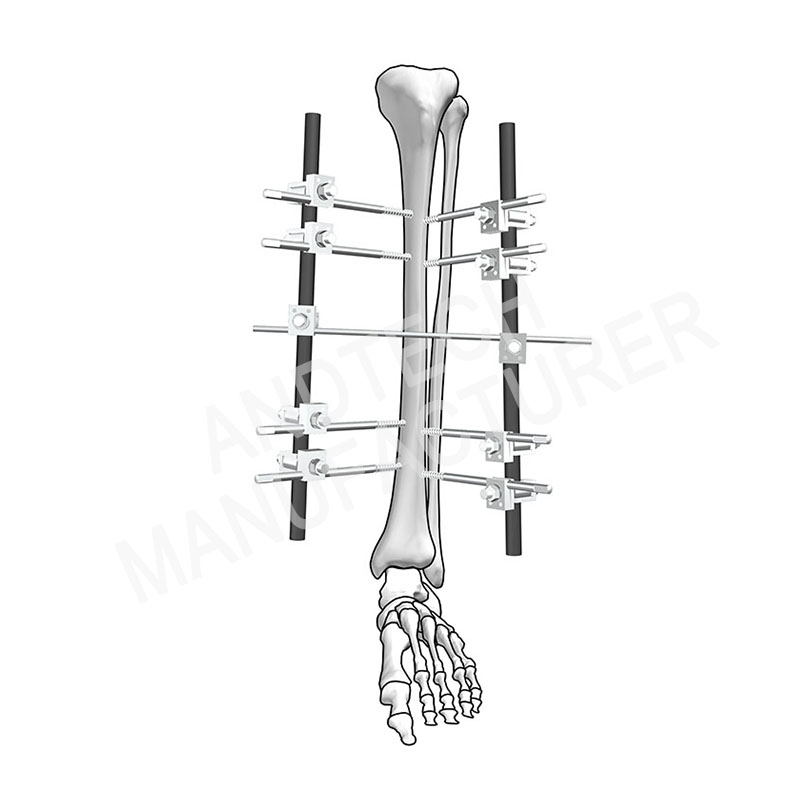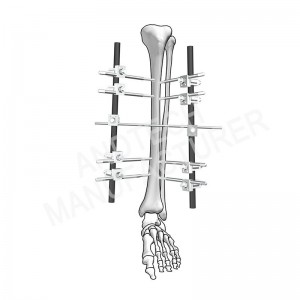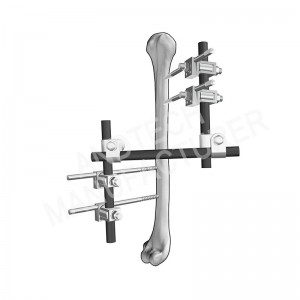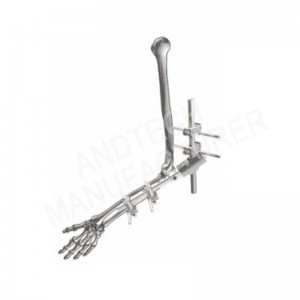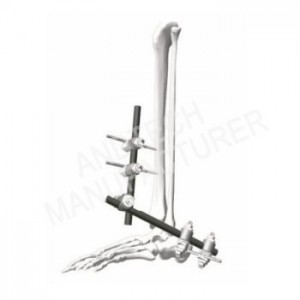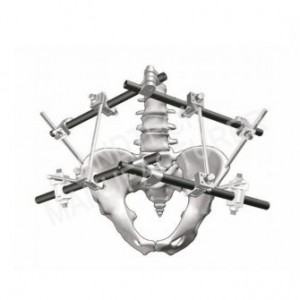Dissection II IV (Φ11)
Main clinical indications of External Fixation System
II-degree or III-degree open fracture
Serious backbone fractures and adjacent joint fractures
Infected nonunion
Ligament injury-temporary bridging and fixation of joint
Fast I-stage fixation of soft tissue injury and fractures of patients
Fixation of closed fracture with serious soft tissue injury(developing injury of soft tissue, burn, skin disease)
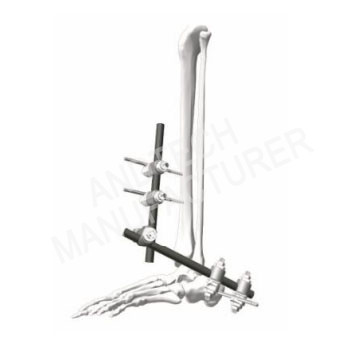
Ankle Fixation 11mm
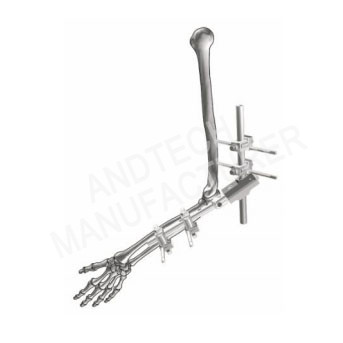
Elbow Fixation 11mm
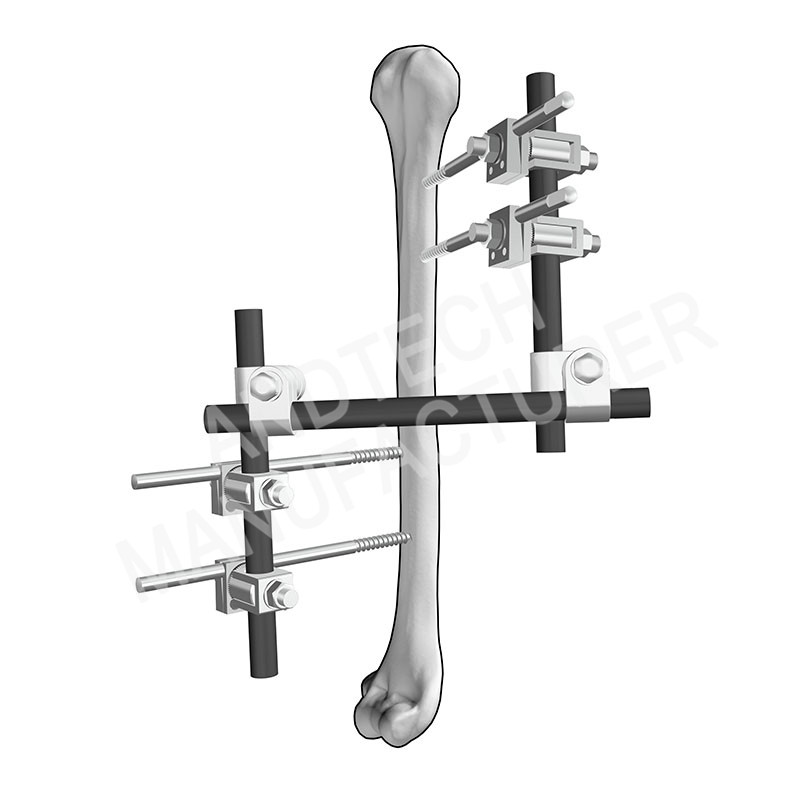
Femur Fixation 11mm
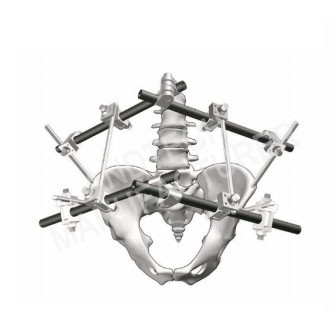
Pelvic Fixation 11mm
Other indications of External Fixation System:
Arthrodesis and osteotomy
Correction for body axis alignment and poor body length
Complications of External Fixation System:
Infection of screw hole
Scanz screw loosening
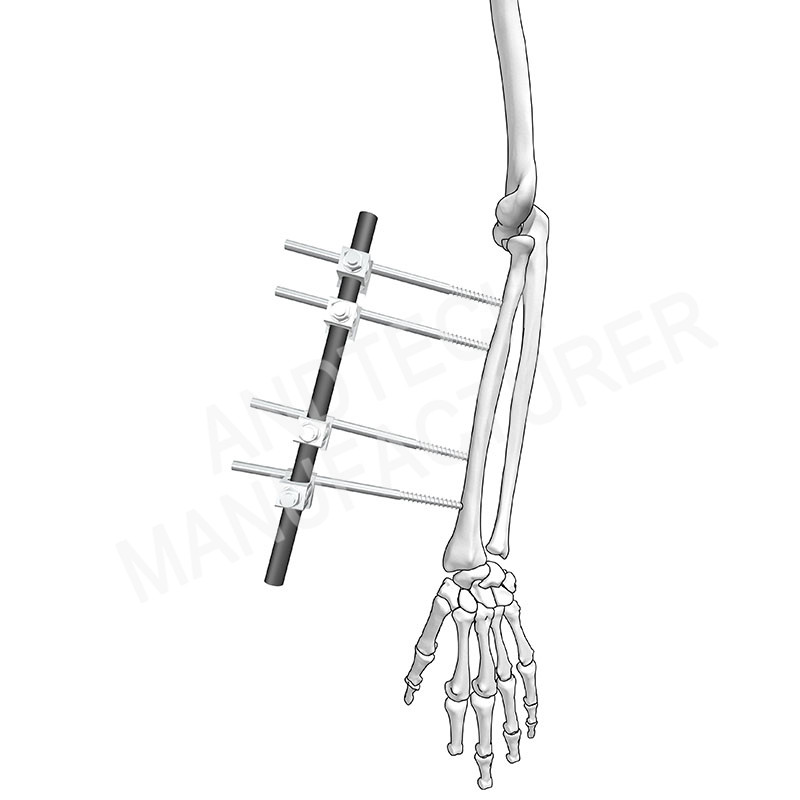
Radius Fixation 11mm
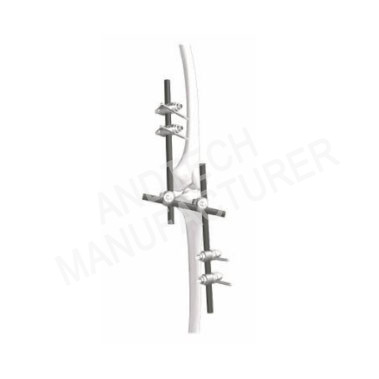
Service Light
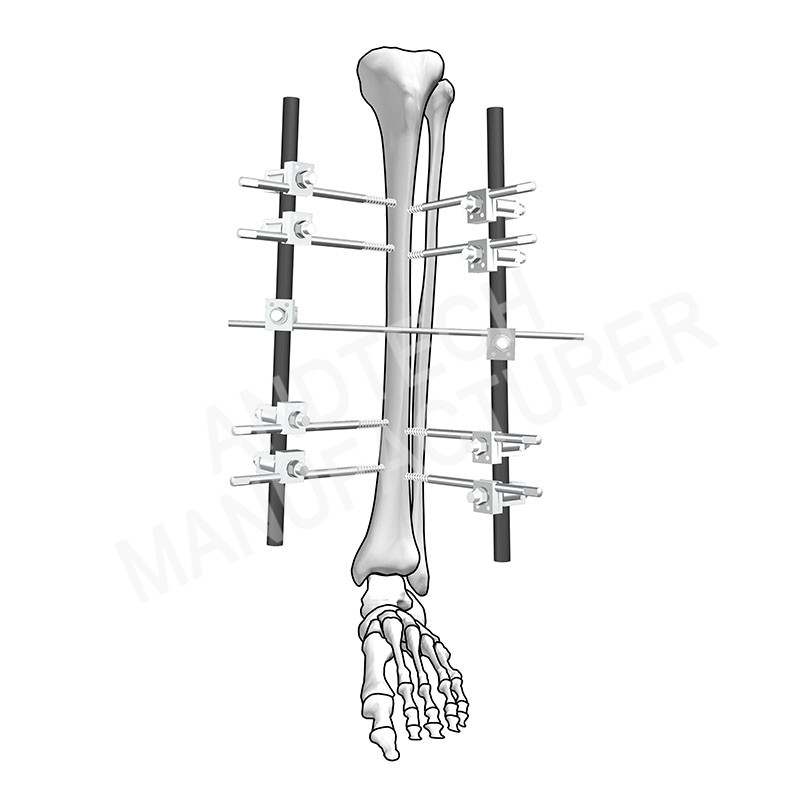
Tibia Fixation 11mm
History of External Fixation
The external fixation device invented by Lambotte in 1902 is generally thought to be the first "real fixator". In America it was Clayton Parkhill, in 1897, with his "bone clamp" who started the process. Both Parkhill and Lambotte observed that metal pins inserted into bone were tolerated extremely well by the body.
External fixators are often used in severe traumatic injuries as they allow for rapid stabilization while allowing access to soft tissues that may also need treating. This is particularly important when there is significant damage to skin, muscle, nerves, or blood vessels.
An external fixation device may be used to keep fractured bones stabilized and in alignment. The device can be adjusted externally to ensure the bones remain in an optimal position during the healing process. This device is commonly used in children and when the skin over the fracture has been damaged.






